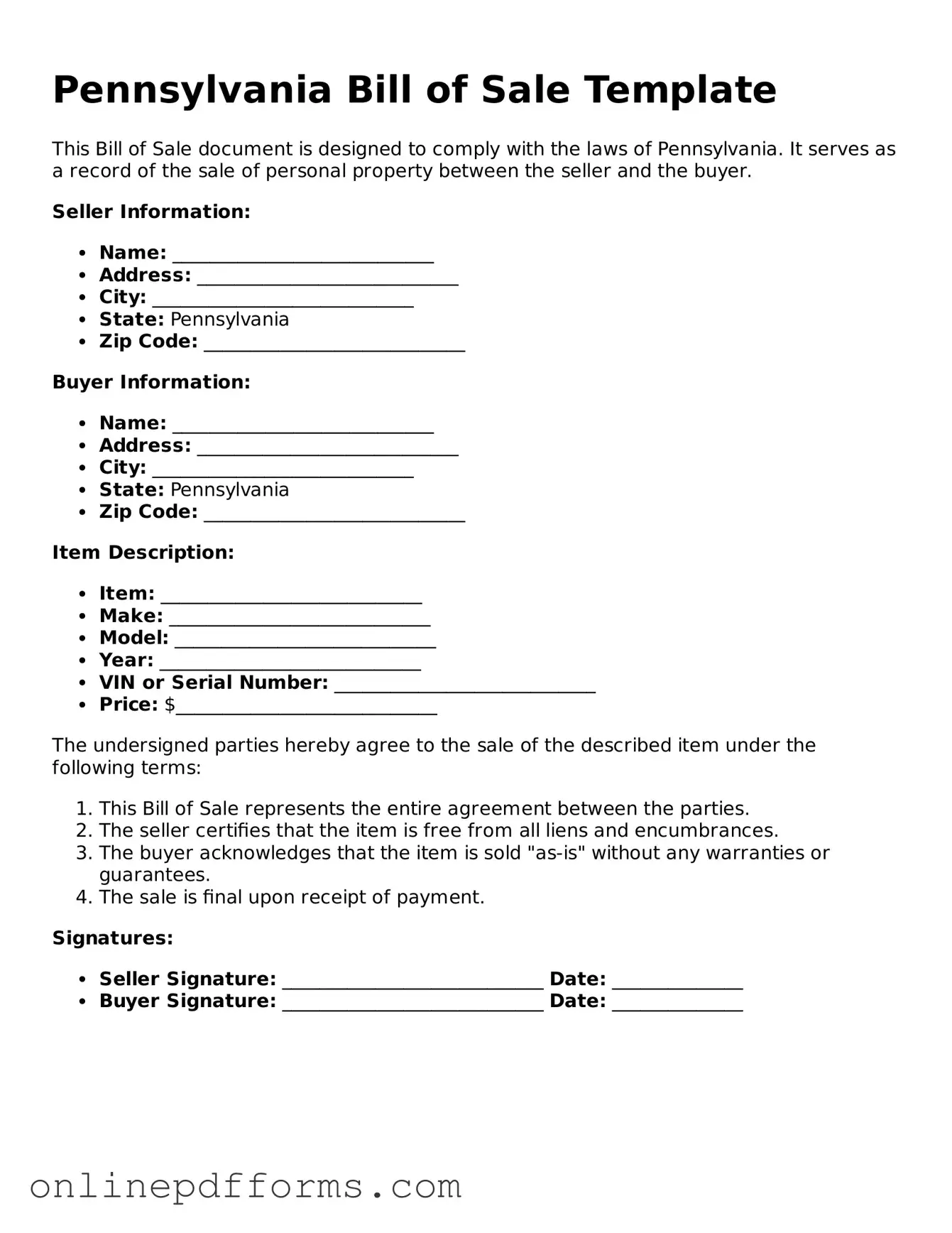The Pennsylvania Vehicle Bill of Sale is similar to the General Bill of Sale. Both documents serve as proof of transfer of ownership for personal property. A General Bill of Sale can be used for various items, such as furniture, electronics, or equipment. It includes details about the buyer, seller, and the item being sold, ensuring that both parties have a clear record of the transaction.
Another document that resembles the Pennsylvania Bill of Sale is the Boat Bill of Sale. This form is specifically designed for the sale of boats and includes information about the vessel, such as its hull identification number and registration details. Like the Vehicle Bill of Sale, it protects both the buyer and seller by documenting the terms of the sale.
The Motorcycle Bill of Sale is also similar in nature. This document facilitates the transfer of ownership for motorcycles, detailing the bike's make, model, and VIN. It serves as a legal record, ensuring that the buyer can register the motorcycle in their name without issues.
The Firearm Bill of Sale is another related document. It is used when buying or selling firearms and includes essential information about the weapon, such as its serial number and type. This form is crucial for compliance with state and federal laws regarding firearm transactions.
A Lease Agreement can be compared to the Bill of Sale in that it also outlines the terms of a transaction, although it pertains to rental arrangements rather than ownership transfers. It details the responsibilities of both the landlord and tenant, ensuring clarity in the rental relationship.
The Warranty Deed is another document that serves a similar purpose in real estate transactions. It transfers ownership of property and guarantees that the seller has the right to sell it. Like the Bill of Sale, it provides a legal record of the transaction and protects the interests of the buyer.
The Quitclaim Deed is akin to the Warranty Deed but with less protection for the buyer. It transfers ownership without guaranteeing that the seller holds a clear title. This document is often used between family members or in situations where the buyer trusts the seller completely.
The Affidavit of Title is similar to the Bill of Sale in that it provides assurance regarding the ownership of an item. This document is often used in conjunction with other sales documents to affirm that the seller has the right to sell the item and that there are no liens against it.
The Personal Property Security Agreement is another document that can be compared to the Bill of Sale. It outlines the terms under which personal property is used as collateral for a loan. While it does not transfer ownership, it ensures that the lender has a claim to the property in case of default.
Lastly, the Assignment of Contract is similar in that it involves the transfer of rights from one party to another. This document is commonly used in real estate and business transactions, ensuring that the new party assumes the responsibilities and benefits outlined in the original contract.
